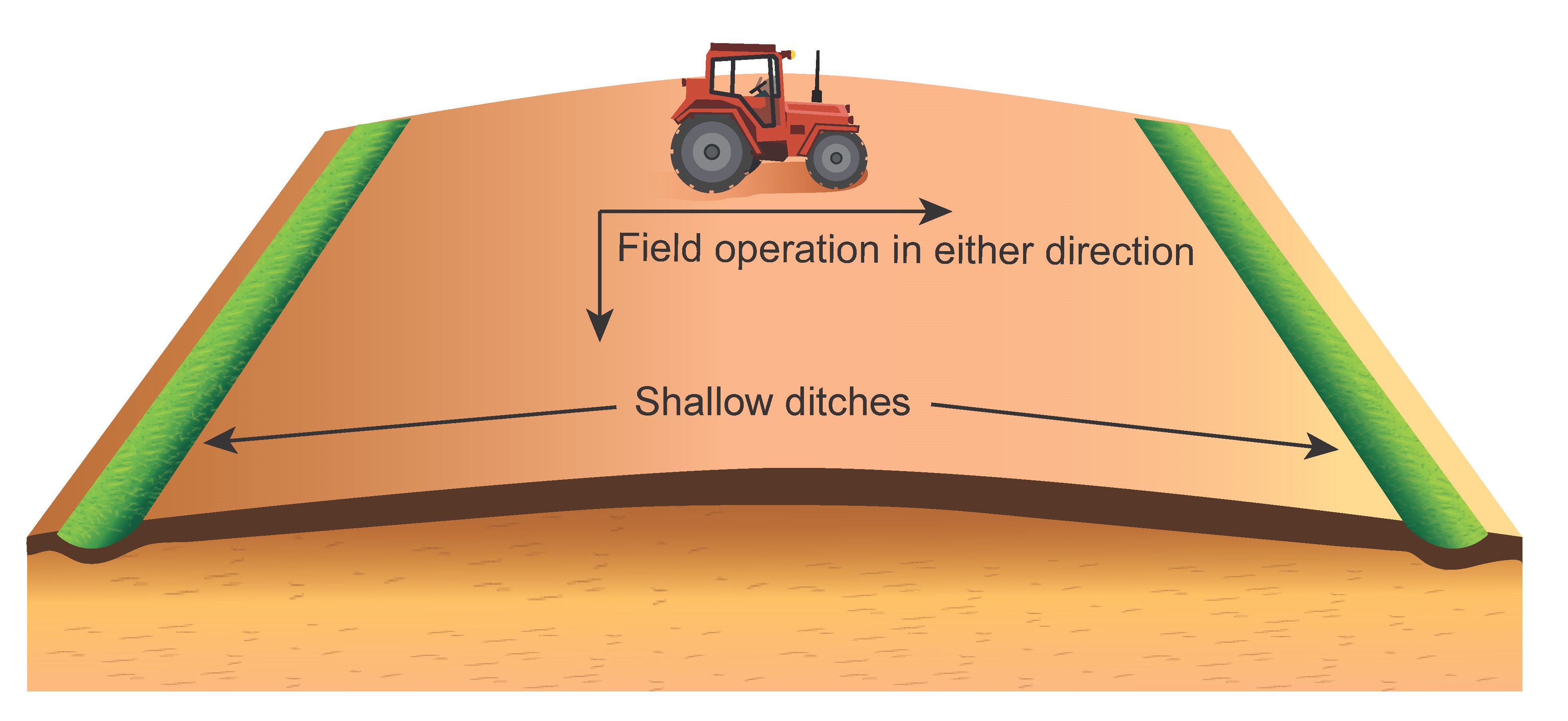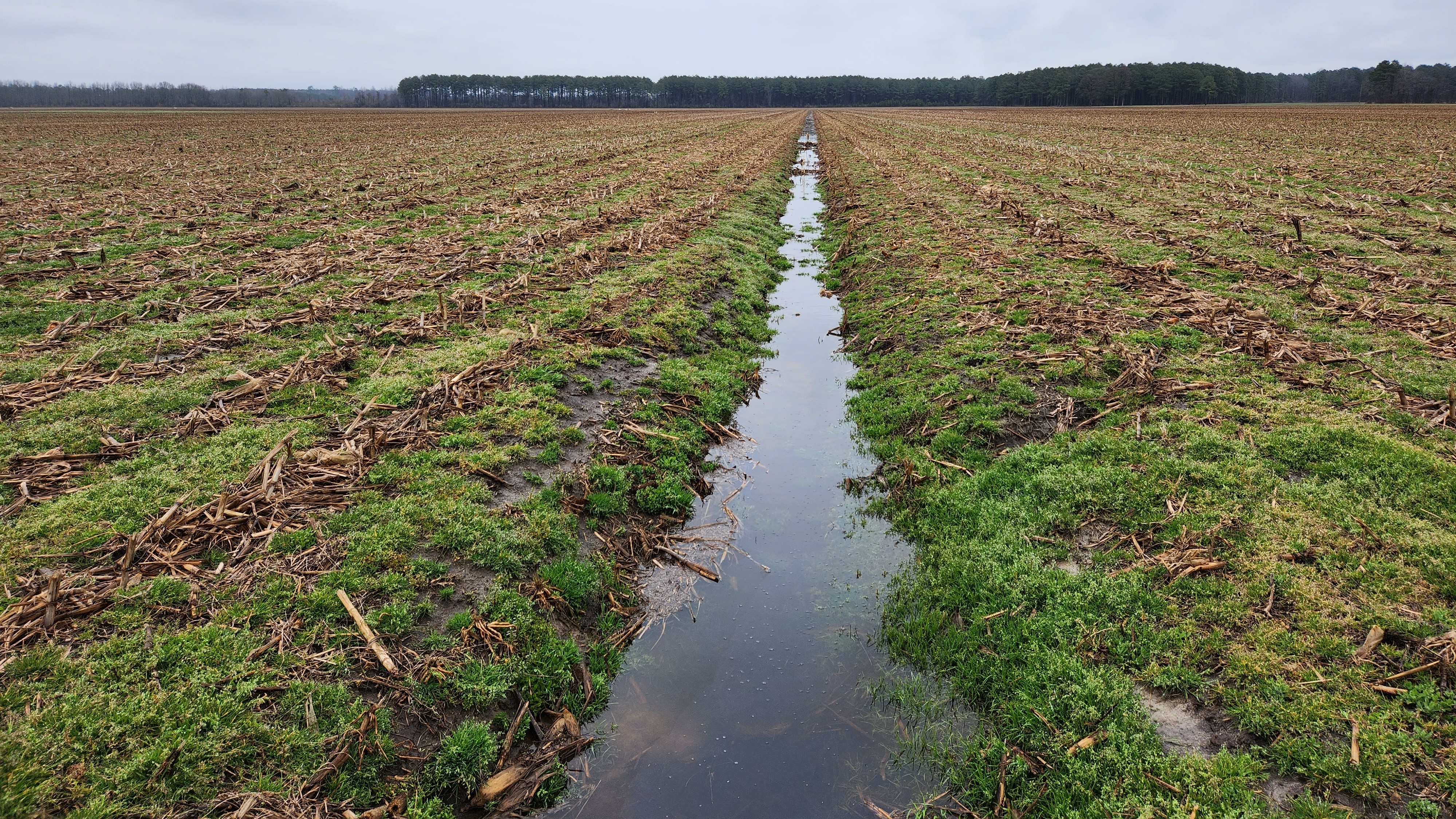Surface Drainage
For the pdf version of this bulletin, click here.
4. Surface drainage
Surface drainage is a cheap option to prevent surface water ponding caused by high-intensity rainfall. In this system, excess water flows over the artificially or naturally sloping ground toward vegetated shallow ditches or grassed waterways.
4.1. Vegetated shallow ditches
A vegetated shallow ditch is generally suitable in relatively flat fields (less than 0.5% slope) with poorly drained soils. In this system, the soil between the ditches is crowned to direct surface runoff into the vegetated shallow ditches (figures 3 and 4). These shallow ditches then empty into a drainage ditch. It is best if the ditch spacing matches a certain number of passes by the farm equipment. On heavy clay soil, the maximum ditch length should be about 800 ft with a minimum grade of 0.1% (Philips 1963). The ditch should have a minimum height of 6 inches and allow trafficability.
You can use a ditcher to make the shallow ditches. There are two general types of ditchers: V-shaped ditcher (Figure 2), or rotary ditcher where an impeller spins and throws soil away. Some ditchers come with GPS or laser grade control to maintain uniform grade.


4.2. Grassed waterways
A grassed waterway deals with surface runoff in a rolling landscape without causing erosion (Figure 5). In this method, vegetated natural waterways are created in low areas of the field to convey surface runoff into a drainage ditch and to prevent gullies. The grassed waterways can provide forage and wildlife habitat. They can also reduce peak flow by increasing the surface roughness.



 Print
Print Email
Email